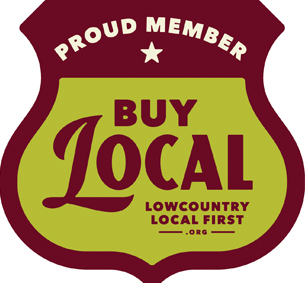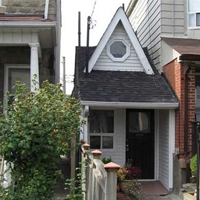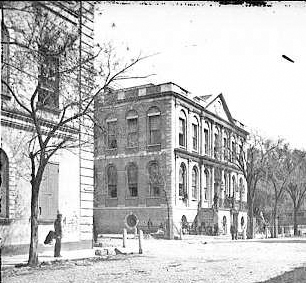


This is the first in a series of interviews with the civic-minded organizations that embraced the “If You Were Mayor” concept long before it was a reality. We had a recent conversation with the Lowcountry Local First Executive Director Jamee Haley to discuss her vibrant organization and the future of Charleston.
Tell us about LLF’s mission and how that segues with the question of livability in Charleston? Our mission is to build an economy based on what makes the people and place of Charleston unique – what makes us great – and how that must be protected from the pressures of explosive growth facing the region down the road. We’ve done this by working to maintain and grow the local agricultural economy (SC’s largest industry), and that has naturally led to encouraging the synergy between farmers and local culinary businesses and restaurants; being an advocate for local businesses and farmers; and developing affordable workspace for entrepreneurs. Ultimately, livability depends on thriving local businesses that reflect what makes Charleston special so that people will continue to come here to live, work and play.
And, what if you were Mayor? The challenges of the region’s rampant growth must be seen as an opportunity. We certainly need to protect what makes Charleston great and diverse, and avoid the ill effects of gentrification and commercialized homogenization. Designated local business districts could attract shops like core businesses – hardware stores, shoe repairs shops, or drug stores – that are being driven out of the city center. Areas like the neck and upper peninsula may be more suitable and affordable while still in reasonable proximity to customers.
We should also consider the concept of “anchor institution” for MUSC since it is the region’s largest employer and is a stabilizing presence. It has been noted that some institutions like this actively and successfully engage in community and economic development by identifying economic “leakages” – these then become opportunities for neighborhood revitalization, incubating small businesses and innovating employee ownership models. While the Horizon Project might be one step in this direction, there is obviously still plenty of room for the university to play a significant leadership role in the future of its west side neighborhood within the overall framework of the city.
For Charleston, the challenge seems to be recognizing that while our economy is flourishing, we still have many opportunities for innovation that ensure everyone can benefit from the region’s success.

A prevailing theme of the Mayor’s race in Charleston surrounds the question of “livability.” We’ve seen it in print media, newspapers and magazines, and it is coming up with some frequency related to our question: If You Were Mayor…?
“Livability” is certainly perceived by different segments of the population in many different ways (stayed tuned for more on this in the future). Before our website’s launch, we had accumulated more than five years of research covering the topic, including numerous lists and metrics that ranged from The Economist magazine’s rankings, rooted in establishing equitable compensation for corporate executives in cities around the world, to the rather quaint “Popsicle Index,” which queries whether it is safe for a child to go alone to a nearby shop, purchase a popsicle, and walk home.
Is there a way to collect and process these lists into a single authoritative resource? “Livability” basically comes down to how people can live and thrive in the city. We slice the topic of livability into five pieces that cover many areas constituting the foundation of a truly “great” city for its residents – Transportation; Education; Economic Opportunity; Arts & Culture; and, Neighborhoods, Parks, & Housing. You can say, as Descartes might, that your posted ideas and initiatives contribute to the city’s “inventory of the possible.”
Don’t get tripped up, however, on “Liveable v. Lovable,” as noted in this article from the Financial Times. This conundrum presents the case for those characteristics common to the world’s “great cities” – characteristics that bear consideration while possibly challenging one’s commonly held beliefs: (1) Diversity of people, wanting to come to the city in droves; (2) Tolerance, which is required to make diversity work; (3) Density of commercial, residential, and cultural activities; (4) Blend of beauty and ugliness, to both lift the soul and ensure there are parts of the city than can accommodate change; (5) Social mix of people, from different economic strata in close proximity to each other creating liveliness; and, (6) Civility, which is impossible to measure (but held in spades by Charleston).
Aspire to livability and greatness.

This week’s blog is a hat-tip to Chris who recently posted an idea entitled “Downtown Living for Key Workers.” The post highlights the possibility for micro-housing (units at less than 400 sq. ft.) to provide more affordable rental units in Charleston, and references similar approaches in Portland or Denver. Another example is this building currently in development for New York City with 55 units ranging in size from 270 to 350 square feet. The competition-winning scheme was unveiled in early 2013 and is one offering in the mix to address the city’s current shortfall of over 800,000 affordable housing units. This type of concept is growing as many municipalities weigh options that can curb gentrification in desirable downtown areas that attract young professionals and entrepreneurs.
Micro-housing piggy-backs off of the larger “tiny house” movement, a trend that goes beyond affordability and suggests a larger cultural shift. In Shaunacy Ferro’s article at Fast Company, she notes it is largely accepted that, while not exactly earth-shattering, a tiny house in a rural setting is an environmentally better choice than building a “McMansion.” However, the article holds forth on a more important message about the construction of tiny dwellings in urban settings. Establishing this possibility affords a range of options for young professionals, seniors, and couples, whether it is a building made up of small units, ala New York City’s option, or the addition of “granny flats” to add greater density in established urban neighborhoods.
There is a lot of room for discussion on this topic. Thanks to Chris for putting it on the table.

In the continuing effort to “get things done” these days, local governments have to be a little more creative as budgets tighten and citizens demand more accountability. Bold ideas are needed to find effective partnerships, collaborative possibilities, and proven or promising solutions. Since the beginning of December we have been posting articles on our Facebook page to spark your imagination for some new ideas or initiatives that could make Charleston more livable. Two recent posts introduce some efforts that are prompting creative change within local government.
Jes Howen McBride’s article on GOOD magazine’s website explores some creativity among public sector employees, and how one city has chosen to specifically incentivize the city staff to put forth workable ideas with a focus on greater efficiencies, quality of life, and measurable impact. On November 6, Los Angeles Mayor Eric Garcetti announced the creation of a $1 million “Innovation Fund,” that rewards creative solutions proposed, “ not by professionals in the art or tech industries, but by city employees.” He highlighted how one city employee, frustrated by the waste of air conditioning running all the time in his building, developed a bright red button that would enable the last-person-to-leave-the-premises with the ability to shut down the system overnight. You can follow this program’s development at www.innovate.lacity.org.
On another, more systematized front, Bloomberg Philanthropies has just announced a second round of grants for various cities to implement its Innovation Delivery methodology for creative problem solving and responsive intervention in city government. The funds are directed at the creation of staff-level “innovation teams” who can assist a city’s mayor to both generate new ideas and develop the capacity to execute them. Examples of success in the first round of grants earlier this year include: reduction of retail vacancies in Memphis, minimizing unnecessary ambulance trips to the emergency room in Louisville, cutting licensing time for new restaurants in Chicago, reducing homelessness in Atlanta, and reducing the murder rate in New Orleans. You can read more about the program and some success stories here: www.bloomberg.org/program/government-innovation/innovation-teams/
Technology sets the stage for cities to innovate and explore new ideas. And many of those new ideas can come from you.

These days, with nations and states paralyzed by ideology, cities are the last resort of pragmatic, participatory, creative, and cooperative problem-solving. In the most successful cities, local governments, civic-minded organizations, and businesses partner to tackle issues. That work not only enhances quality of life but helps cities establish a place in the competitive global economy. How, then, to provide access to these collaborative partnerships and empower individuals (that’s YOU) to take a larger stake their communities? If You Were Mayor was born.
Do you love your city and feel you want to build on its strengths to make it more livable in the short and long run—cleaner, safer, more appealing to the senses, easier to get around, more affordable and sustainable, more open to your participation in its essential life? Would you welcome a robust exchange of ideas that starts not by asking what the local government can be persuaded to do, but instead explores the limits of possibility by sketching an ideal, joyful, accessible, and sustainable city? Are you willing to commit yourself to enhancing the climate for entrepreneurs and other creative individuals to start their own businesses, and to supporting initiatives to materially improve the lives of low-income people? Are you ready to encourage governance that embraces innovation and collaboration?
If the answer to these questions is yes, you’ve come to the right place. Come on in…